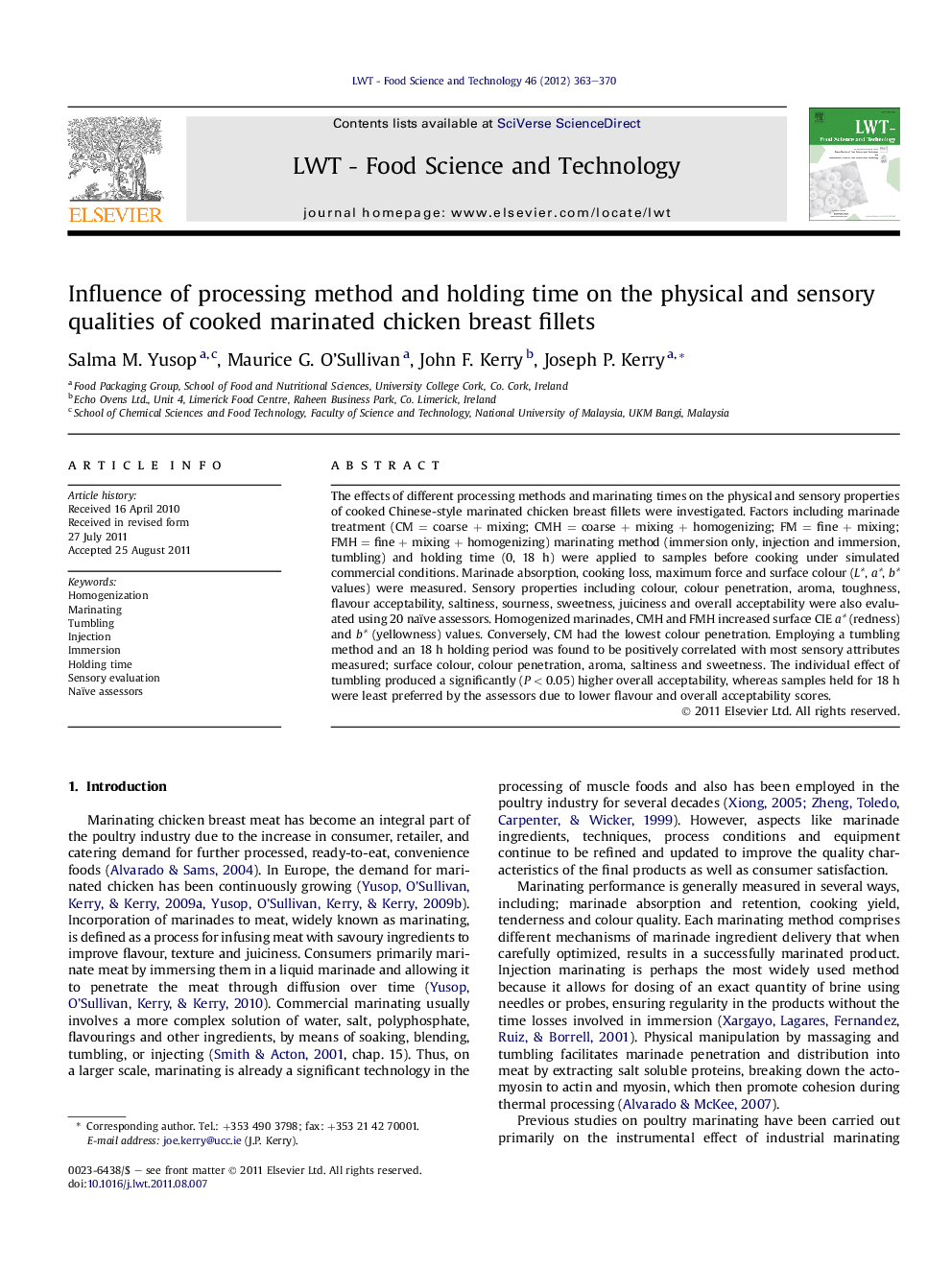| Article ID | Journal | Published Year | Pages | File Type |
|---|---|---|---|---|
| 6405481 | LWT - Food Science and Technology | 2012 | 8 Pages |
The effects of different processing methods and marinating times on the physical and sensory properties of cooked Chinese-style marinated chicken breast fillets were investigated. Factors including marinade treatment (CM = coarse + mixing; CMH = coarse + mixing + homogenizing; FM = fine + mixing; FMH = fine + mixing + homogenizing) marinating method (immersion only, injection and immersion, tumbling) and holding time (0, 18 h) were applied to samples before cooking under simulated commercial conditions. Marinade absorption, cooking loss, maximum force and surface colour (L*, a*, b* values) were measured. Sensory properties including colour, colour penetration, aroma, toughness, flavour acceptability, saltiness, sourness, sweetness, juiciness and overall acceptability were also evaluated using 20 naïve assessors. Homogenized marinades, CMH and FMH increased surface CIE a* (redness) and b* (yellowness) values. Conversely, CM had the lowest colour penetration. Employing a tumbling method and an 18 h holding period was found to be positively correlated with most sensory attributes measured; surface colour, colour penetration, aroma, saltiness and sweetness. The individual effect of tumbling produced a significantly (P < 0.05) higher overall acceptability, whereas samples held for 18 h were least preferred by the assessors due to lower flavour and overall acceptability scores.
⺠Marinating effects on the physical and sensory properties of chicken breast. ⺠Marinade absorption, cooking loss, maximum force and surface colour were assessed. ⺠Sensory properties were evaluated using 20 naïve assessors. ⺠The individual effect of tumbling produced a significantly higher overall acceptability. ⺠Samples held for 18 h were least preferred by the assessors.
